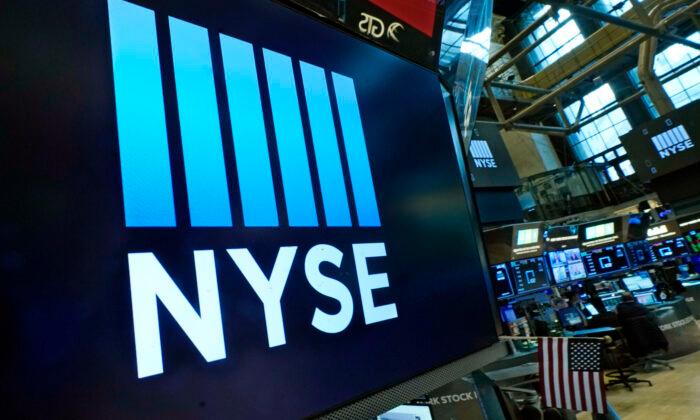NEW YORK—Stocks rallied Thursday after a group of big banks offered a lifeline to the bank that investors had zeroed in on in their hunt for the industry’s next victim.
The S&P 500 jumped 1.8 percent for its best day in nearly two months after 11 of the biggest banks said they would deposit a combined $30 billion into First Republic Bank. The Dow Jones Industrial Average erased an early loss of 300 points to climb 371 points, or 1.2 percent, while the Nasdaq composite jumped 2.5 percent.
This week has been a whirlwind for markets globally on worries that banks may be bending under the weight of the fastest set of hikes to interest rates in decades. The concerns have been flaring since Friday’s collapse of Silicon Valley Bank, which was the second largest bank failure in U.S. history.
Since then, Wall Street has tried to root out banks with similar traits, such as lots of depositors with more than the $250,000 limit that’s insured by the Federal Deposit Insurance Corp., or lots of tech startups and other highly connected people that can spread worries about a bank’s strength quickly.
First Republic Bank has been at the center of the market’s swivels, and it rose 10 percent Thursday after slumping as much as 36 percent early in the day. In the statement announcing their deposits, the group of 11 banks said the move “reflects their confidence in First Republic and in banks of all sizes.”
Besides stocks, Treasury yields also strengthened suddenly following the first reports of a possible rescue by the industry. That was a sign of increased confidence from the bond market.
Across the Atlantic, European stocks rose after the European Central Bank announced a hefty increase to interest rates. Concerns there were also easing about another bank, Credit Suisse, which helped cause markets to tumble sharply Wednesday. The Swiss bank has been battling troubles for years, but its plunge to a record low raised concerns just as more attention was shining on the wider industry.
Credit Suisse’s stock in Switzerland leaped 19.2 percent Thursday after it said it will strengthen its finances by borrowing up to 50 billion Swiss francs ($54 billion) from the Swiss National Bank.
Much of the damage for banks is seen as the result of the Federal Reserve’s fastest barrage of hikes to interest rates in decades. They’ve shocked the system following years of historically easy conditions in hopes of driving down painfully high inflation.
Higher rates can tame inflation by slowing the economy, but they raise the risk of a recession later on. They also hurt prices for stocks, bonds and other investments. That latter factor was one of the issues hurting Silicon Valley Bank because high rates forced down the value of its bond investments.
U.S. Treasury Secretary Janet Yellen told a Senate committee on Thursday that the nation’s banking system “remains sound” and Americans “can feel confident” about their deposits.
“Fast-moving disruptions in the global banking industry are making for highly fluid and uneasy markets,” said John Gentry, head of corporate fixed income group at Federated Hermes. “It’s never comfortable when” markets are trying to figure out the correct price for things amid deep uncertainty. “But we suggest caution in trying to draw strong parallels to 2007-09,” when a financial crisis torpedoed the global economy.
Wall Street increasingly expects this week’s turmoil to push the Federal Reserve to hike interest rates next week by only a quarter of a percentage point. That would be the same sized increase as last month’s, and it would be counter to expectations from earlier this month for a hike of 0.50 points, as it had been potentially signaling.
The European Central Bank on Thursday raised its key rate by half a percentage point, brushing aside speculation that it may reduce the size because of all the turmoil around banks.
Some of Wall Street’s wildest action this week has been in the bond market, as traders rush to guess where the Fed is heading.
The yield on the 10-year Treasury rose to 3.57 percent from 3.47 percent late Wednesday. Earlier in in the day, it dropped as low as 3.37 percent and has been veering sharply since climbing above 4 percent earlier this month. It helps set rates for mortgages and other important loans.
All the stress in the banking system has raised worries about a potential recession because of how important smaller and mid-sized banks are to making loans to businesses across the country. Oil prices have slid this week on such fears.
Reports on the U.S. economy, meanwhile, continue to show mixed signals.
The job market looks remarkably solid, and a report said fewer workers applied for unemployment benefits last week than expected.
But other pockets of the economy are continuing to show weakness. Manufacturing has struggled, for example, and a measure of activity in the mid-Atlantic region weakened by more than forecast.
The housing market has also struggled under the weight of higher mortgage rates, though homebuilders broke ground on more projects last month than expected. That could be a signal the industry is finding some stability.
All told, the S&P 500 rose 68.35 points to 3,960.28. The Dow gained 371.98 to 32,246.55, and the Nasdaq jumped 283.22 to 11,717.28.





